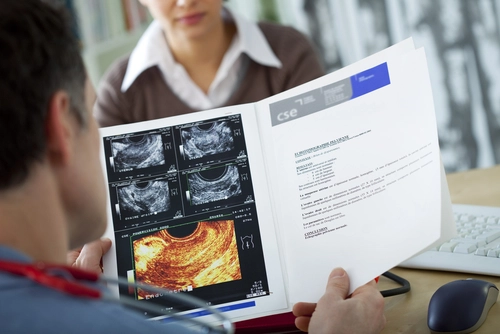So Now You're Using ICD-10 -- Time to Look Forward to 2016 ICD-10 Ob-Gyn Changes

You’ve studied and now transitioned to the new diagnosis system. Job done, right? Hardly. Like ICD-9, ICD-10 will be subject to constant updates, starting October 1, 2016 next year – and the ICD-10 Coordination and Maintenance Committee has already discussed some clarifications you should start heeding right now.
Note: The following changes have been approved at the September 22, 2015 meeting of the ICD-10 Coordination and Maintenance Committee meeting to become effective October 1, 2016 when the ICD-10 code set once again accepts modifications.
What this means now: You need to understand these changes now, because they represent instructions that should have been clarified and accepted way before the final ICD-10 code set was frozen.
Take Note of This Gyn Code Correction
Problem: So, by now you know that the new ICD-10 codes for the gynecologic exam are broken into two different ICD-10 codes: one for with abnormal findings and one without. However, did you notice that the note for use of an additional code to identify the abnormal findings appears under code Z01.419 (Encounter for gynecological examination (general) (routine) without abnormal findings) — the code that represents no abnormal findings? You have always known what was meant, but the error will be officially corrected in 2016 as follows:
Add Use additional code to identify abnormal findings
Delete Use additional code to identify abnormal findings
Highlight This Excludes1 Note Error
There was an error in assigning an Excludes1 Note to the HPV screening in addition to an encounter for cervical screening code.
Remember: An “Excludes1” note means that the two conditions cannot be billed at the same encounter.
This error too will be corrected in 2016 to change this statement to an “Excludes2” note — meaning that you can report both codes together.
What this means now: Even the though the change is not “official,” you should report both Z12.4 and Z11.51 if your physician has ordered both a routine Pap smear and HPV screening at the same encounter:
Delete/Revise Excludes1: encounter for screening for human papillomavirus (Z11.51)
Add Excludes2: encounter for screening for human papillomavirus (Z11.51)
Get This Ob Complication Coding Clarification
The most common question ob-gyn coders ask about ICD-10 ob complication coding is how and when to use the Z3A codes for weeks of gestation.
The guidelines have indicated that you may report Z3A codes, while the tabular index has always stated you must report these codes with all codes that begin with the letter “O.” But while there has never been an issue while the patient was still pregnant or even on the date of delivery, the question always was why would you have to report a Z3A code for a condition that was clearly only being treated in the postpartum period? That mystery has been solved by the following clarification that will appear in the ICD-10 2016 release:
What this means now: Therefore, when treating the patient for a postpartum complication, you should not report a Z3A code at the time of service.




